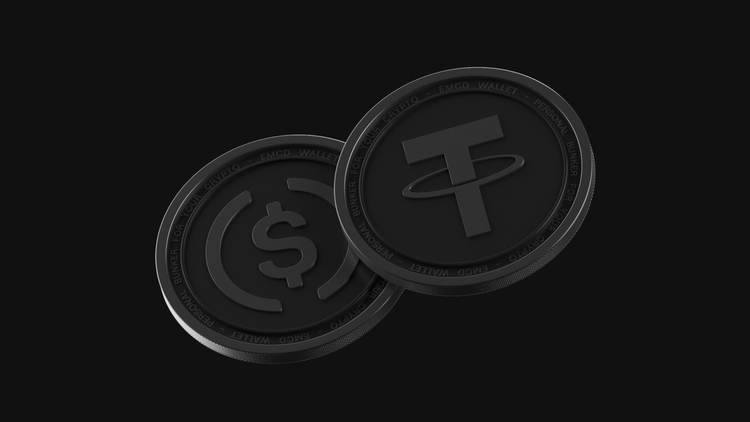Crypto Market Cap Explained Simply

According to https://coinmarketcap.com/, as of September 2025, the total value of the crypto market is around $3.85 trln. This figure includes all types of digital assets — from tokens of various standards to stablecoins, each playing its own role. Currently, there are over 15,000 cryptocurrencies in existence.
Market capitalization or market cap is a key metric that investors use to assess a crypto asset’s growth potential. In general, the higher the market cap, the more “dominant” the asset is in the market.
Cryptocurrencies are often classified into low-cap, mid-cap, and large-cap categories. Many traders use these tiers as part of their investment strategies to balance potential returns and risk.
In this guide, we’ll explain the concept of market capitalization, why it matters, and how the classification works.
- What Does the Capitalization of Cryptocurrencies Mean
- How to Calculate the Market Capitalization of a Digital Asset
- The Difference Between Fully Diluted and Market Capitalization
- What Information Does Capitalization Carry When Analyzing an Asset?
- Classification Of Market Capitalization in Cryptocurrencies
- Deflationary Tokens
- Using Market Capitalization in Practice
- F.A.Q.
What Does the Capitalization of Cryptocurrencies Mean
Мarket cap is a metric that helps us estimate the total value of a digital asset. In the crypto space, it also signals how popular or “dominant” a token is. In traditional stocks, market cap is calculated by multiplying the stock price by the number of shares outstanding — in essence, how much it would cost to buy the whole company. Crypto works similarly in concept: you take the current price of a coin and multiply it by the number of coins in circulation.
As of September 2025, Bitcoin is leading the pack with a market cap around $2.26 trillion. Ethereum, while behind, is also huge and ranks second with the market cap of around $490 billion.
However, using market cap universally across all crypto assets has its critics. Some of the key issues:
- Fully diluted market cap — this assumes every possible token is in circulation, even those not yet issued
- Token supply quirks — some projects have tokens held in reserve or with unlimited supply
- Active vs. inactive coins — many tokens exist but are barely used
Because of these complexities, market cap can sometimes give a misleading picture. It’s a useful indicator — but not one to rely on blindly.

How to Calculate the Market Capitalization of a Digital Asset
The formula for calculating a cryptocurrency’s market capitalization is simple:
For example, as of September 2025, Bitcoin trades at about $113,300 with a circulating supply of roughly 19.92 million coins. Multiplying these numbers gives a market cap of around $2.26 trillion.
Most major exchanges, like Binance, automatically display the market cap of each listed asset. You can also track these numbers on popular data aggregators such as CoinMarketCap and CoinGecko.
The Difference Between Fully Diluted and Market Capitalization
Fully Diluted Value (FDV) shows the maximum possible value of a cryptocurrency if every single token that could ever exist were already in circulation. The formula is:
This metric helps investors estimate how much a project could be worth once all tokens are released. The key difference between market cap and FDV lies in timing and potential:
- Market capitalization reflects the current value of a crypto asset based on the coins already in circulation
- FDV reflects a future value, assuming all tokens eventually enter the market — regardless of demand

For that reason, FDV can often look much higher than the present market cap and is best used as a tool to understand long-term supply dynamics.
What Information Does Capitalization Carry When Analyzing an Asset?
Market capitalization isn’t just a number — it helps investors put a crypto project into context. By looking at market cap, you can understand how the asset is valued, how it fits within the broader market, and what kind of opportunities or risks it might carry.
Here’s what market cap can tell you:
- Valuation and fundamentals. Market cap helps check whether the asset’s price matches its real adoption, user activity, and overall utility
- Investment strategy. Investors often categorize coins into large-cap, mid-cap, and low-cap groups to balance risk and return
- Profit potential. Smaller-cap coins may carry higher risk but also greater growth potential compared to large, established assets
Classification Of Market Capitalization in Cryptocurrencies
Cryptocurrencies can be divided into several groups based on their market capitalization. This classification helps investors understand both the potential profit and the level of risk when choosing assets.
Low-cap cryptocurrencies
Low-cap coins usually have a market capitalization of under $1 billion. They are often lesser-known altcoins ranked outside the top 50 by market value.
Many investors are drawn to low-cap assets because of their potential for very high returns. At the same time, these tokens are highly volatile, their prices swing a lot, and the risk of failure is significant.
Examples (as of September 2025): Flow (FLOW), Starknet (STRK), Notcoin (NOT), Lido DAO (LDO).
Mid-cap cryptocurrencies
Mid-cap assets are those with a market capitalization between $1 and $10 billion. In rankings, they usually hold positions between 11 and 50. These are projects that already enjoy popularity within the crypto community, but they are not as widely recognized by the public.
Mid-caps are attractive to many investors because they offer a balance of profit and risk. They often show stronger growth than large-cap coins during bull markets, sometimes rising by hundreds of percent. Still, volatility remains a factor, though lower than with low-caps.
Examples (as of September 2025): Sui Network (SUI), Aptos (APT), NEAR Protocol (NEAR), Cosmos (ATOM), Chainlink (LINK).

Large-cap cryptocurrencies
Large-cap projects are valued at over $10 billion and usually sit in the top 10. These are long-standing, highly popular coins with strong adoption both inside and outside the crypto world.
Investing in large-cap cryptocurrencies is often recommended for beginners because of the relatively lower risk. Institutional investors also prefer them for more stable long-term returns. Some of these coins are even called “blue chips,” since they dominate the market and set industry trends.
Examples (as of September 2025): Bitcoin (BTC), Ethereum (ETH), Tether (USDT), Binance Coin (BNB), USD Coin (USDC), Ripple (XRP), Solana (SOL).
Deflationary Tokens
Deflationary tokens are cryptocurrencies whose supply decreases over time. This reduction in supply limits the number of coins in circulation and can ultimately increase their value.
There are two main ways the supply is reduced:
- Buyback and burn. Developers buy a large number of tokens and send them to a “dead” wallet, effectively removing them from circulation. In crypto slang, this process is called “burning”
- Transaction fees. Some tokens are programmed so that a portion of every transaction is automatically burned, reducing the circulating supply
To better understand deflationary cryptocurrencies, it helps to first know about inflation and deflation. Simply put:
- Inflation makes prices for goods and services rise
- Deflation is the opposite — prices drop when the supply of money or tokens decreases relative to demand
Why does this happen? Prices can rise or fall for many reasons, but supply and demand play a key role. When more money or tokens are available, their value tends to drop. Conversely, when the supply decreases while demand stays the same, the value rises, which is deflation.
A good example of a deflationary token is Binance Coin (BNB). Its initial supply was 200 million tokens. By the end of Q3 2022, almost 40 million BNB had been burned, reducing the total supply toward the target of 100 million.
Ethereum (ETH) has also become deflationary (at high network activity). After the The Merge upgrade, more ETH has been burned during transactions than is created. The update switched Ethereum from a mining-based system to a validator-based proof-of-stake model, changing the way the network operates and reducing the token supply.
Using Market Capitalization in Practice
Investors and crypto enthusiasts can use CoinMarketCap and CoinGecko as reliable tools to check a token’s market capitalization. These platforms track circulating supply and the maximum number of coins, providing up-to-date data for analysis.
As mentioned earlier, market cap can guide investment strategies by dividing cryptocurrencies into categories. Generally, the larger a project’s market cap, the lower the potential profit — but the investment risk is also lower. Smaller-cap projects may offer higher returns, but they are more volatile.
For example, achieving 300% profit with Bitcoin would require its market cap to surpass $4 trillion, which is extremely difficult. In contrast, a project with a $300 million market cap could more easily experience 300% growth.

Market cap also helps understand the behavior of bull and bear markets. During a bear market, large-cap coins like Bitcoin and Ethereum usually suffer smaller losses because their prices are less volatile than low-cap altcoins. In a bull market, large-cap assets may not rise as dramatically as smaller coins, which can deliver massive gains.
Current trends also influence investment timing. Historically, the economy tends to grow after U.S. presidential elections, and large institutional funds now pour substantial amounts into crypto. For instance, in the last week of October 2024, over $4 billion flowed into crypto through BTC ETFs alone — more than the total funds circulating in some national economies.
F.A.Q.
What does the capitalization of the cryptocurrency depend on?
The market capitalization of a cryptocurrency depends on several key factors:
Coin price and circulating supply. The current exchange rate of the cryptocurrency and the number of coins in circulation are the primary drivers of market cap
- Network technology and infrastructure. Tools, protocols, and technologies that support the network — including security and scalability — can influence the asset’s value
- Historical data. Past performance and trends over previous years give context to the current valuation
- Market interest and trading activity. Higher demand and active trading on exchanges can raise the market cap
- Corporate decisions and regulations. Moves by companies, institutional investors, and government regulations (for example, in the U.S. or other countries) can significantly affect capitalization
In short, market cap is shaped by both supply and demand as well as the broader ecosystem surrounding the cryptocurrency.
What is affected by the market capitalization of cryptocurrencies?
Market capitalization strongly influences how investors perceive a cryptocurrency.
High market cap signals stability over time, trust in the project, and a strong position among other coins. These assets are often seen as safer and more suitable for long-term investments.
Low market cap of crypto coins may indicate higher risk, but it can also point to greater growth potential for those willing to take a chance.
In short, a coin’s market cap affects both investment decisions and the perceived reliability of the cryptocurrency in the market.
How do I view the capitalization of cryptocurrencies?
You can check the market capitalization of cryptocurrencies on popular exchanges and analytics platforms, such as CoinMarketCap. These platforms provide data for major coins, update information in real time, and show current prices and trading volumes.
Additionally, there are apps and dashboards that display up-to-date market cap figures, making it easy for investors to track and compare different cryptocurrencies over time.
How can I calculate the capitalization of cryptocurrencies?
To calculate a cryptocurrency’s market capitalization, simply multiply the current price by the number of coins in circulation. These numbers are constantly updated on exchanges.
Example: If there are 10 million coins in circulation and each coin is worth $50, the market capitalization would be:
10,000,000 × $50 = $500,000,000
This calculation gives a quick snapshot of the asset’s total market value and is widely used by investors to compare cryptocurrencies.




